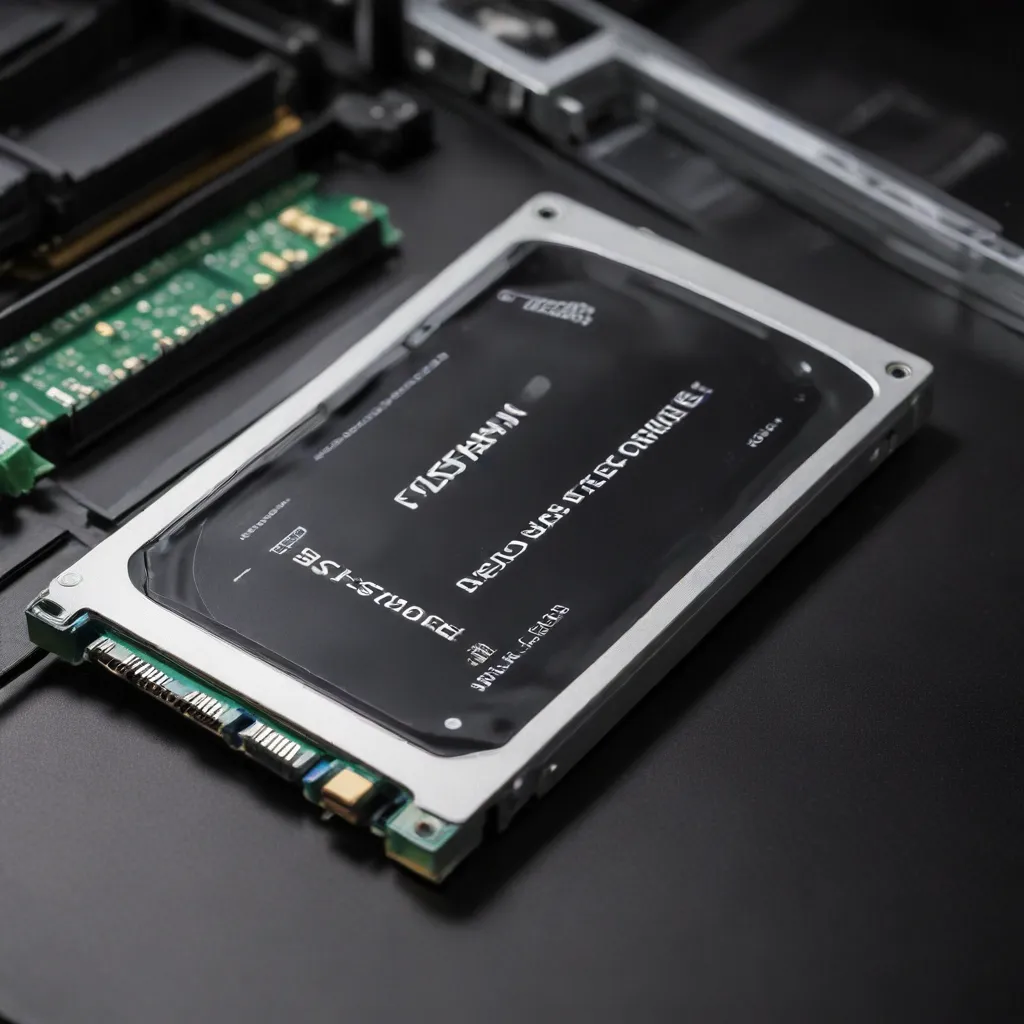
The Transformative Power of Solid-State Drives (SSDs)
In the ever-evolving world of desktop computing, one of the most impactful upgrades you can make is transitioning from a traditional hard disk drive (HDD) to a solid-state drive (SSD). This simple swap can breathe new life into an aging system, transforming the user experience and unlocking unprecedented levels of performance.
Gone are the days when SSDs were considered a luxury reserved for tech enthusiasts. Today, these innovative storage solutions have become the industry standard, offering a myriad of benefits that make them an essential component in any modern desktop setup.
Unparalleled Speed and Responsiveness
One of the primary advantages of upgrading to an SSD is the remarkable boost in system responsiveness. Unlike HDDs, which rely on spinning disks and mechanical read/write heads, SSDs utilize flash-based memory that is lightning-fast in its data access and transfer capabilities.
According to Backblaze, SSDs can be up to 10 times faster than their HDD counterparts. This translates to dramatically reduced boot times, near-instant application launches, and seamless multitasking – all of which contribute to a significantly more efficient and enjoyable computing experience.
Improved Reliability and Durability
In addition to their speed advantages, SSDs offer superior reliability and durability compared to traditional HDDs. With no moving parts, SSDs are inherently more resistant to physical shocks, vibrations, and drops – a common concern for laptop users.
This enhanced resilience not only protects your data but also extends the lifespan of your storage solution. As the Kingston blog highlights, “SSDs are very stable, which ensures that stored data is secure” and they can “maintain a lower temperature with much higher performance.”
Power Efficiency and Compact Design
Another key benefit of upgrading to an SSD is the improved power efficiency it brings to your desktop system. Since SSDs do not require the constant spinning of mechanical platters, they consume significantly less energy compared to traditional HDDs.
This power-saving advantage is particularly valuable for laptop users, as it can translate to extended battery life and reduced heat generation – a win-win for both performance and overall system longevity.
Moreover, the compact design of SSDs allows for more flexible installation options, making them an excellent choice for space-constrained desktop or small form-factor PCs.
Choosing the Right SSD for Your Needs
When selecting an SSD to upgrade your desktop system, there are a few key factors to consider:
-
Capacity: Assess your storage requirements and choose an SSD that provides ample space for your operating system, applications, and critical data. While SSDs typically offer less raw capacity than HDDs, the performance benefits often outweigh the trade-off.
-
Interface: Ensure the SSD you purchase is compatible with your desktop’s existing storage interface, which is typically SATA for older systems or the faster M.2 NVMe standard for more recent builds.
-
Performance: Look for SSDs with high read and write speeds, as these metrics directly impact the overall responsiveness of your system. Popular SSD brands like Samsung, Crucial, and Kingston offer a range of performance-oriented models.
-
Endurance: Consider the drive’s endurance, which is measured in terabytes written (TBW) or drive writes per day (DWPD). This is particularly important for users who frequently write large amounts of data to their storage.
-
Price: While SSDs have become more affordable in recent years, the cost per gigabyte is still higher than traditional HDDs. Weigh the performance benefits against your budget to find the optimal balance.
Cloning Your Existing Drive to an SSD
Once you’ve selected the perfect SSD for your needs, the next step is to migrate your existing data and system settings. The easiest way to accomplish this is by using a cloning software, which creates an exact replica of your current hard drive on the new SSD.
Backblaze’s guide outlines the process in detail, highlighting the importance of using cloning software to ensure a seamless, bootable transition to the SSD. This approach preserves your system configuration and eliminates the need for a fresh operating system installation.
Unleash the Full Potential of Your Desktop
Upgrading your desktop’s storage with a high-performance SSD is one of the most transformative upgrades you can make. By harnessing the speed, reliability, and efficiency of solid-state technology, you’ll unlock a new level of desktop responsiveness that can breathe new life into even the oldest systems.
Whether you’re a power user, a content creator, or simply someone seeking a snappier computing experience, the benefits of an SSD upgrade are undeniable. So why not take the plunge and explore the latest SSD offerings to revolutionize your desktop PC’s performance today?
Frequently Asked Questions
Will upgrading to an SSD make my old PC run like new?
Absolutely! Replacing a traditional hard drive with an SSD can have a dramatic impact on the performance of an older desktop system. As the Quora post highlights, the speed and responsiveness improvements can be substantial, from significantly reduced boot times to near-instant application launches.
How much faster are SSDs compared to HDDs?
According to the information provided in the Backblaze article, SSDs can be up to 10 times faster than their HDD counterparts, depending on the specific task at hand. This speed boost is primarily due to the flash-based memory and lack of mechanical components in SSDs, which enables much faster data access and transfer speeds.
Can I upgrade my existing SSD to a larger or faster model?
Yes, in many cases, you can upgrade an existing SSD to a larger or faster model, especially if your desktop PC is relatively recent. The Backblaze guide notes that some later model PCs can be upgraded with M.2 SSDs, which offer even greater performance. For older systems with 2.5-inch SATA SSDs, you may also be able to swap in a larger capacity model.












